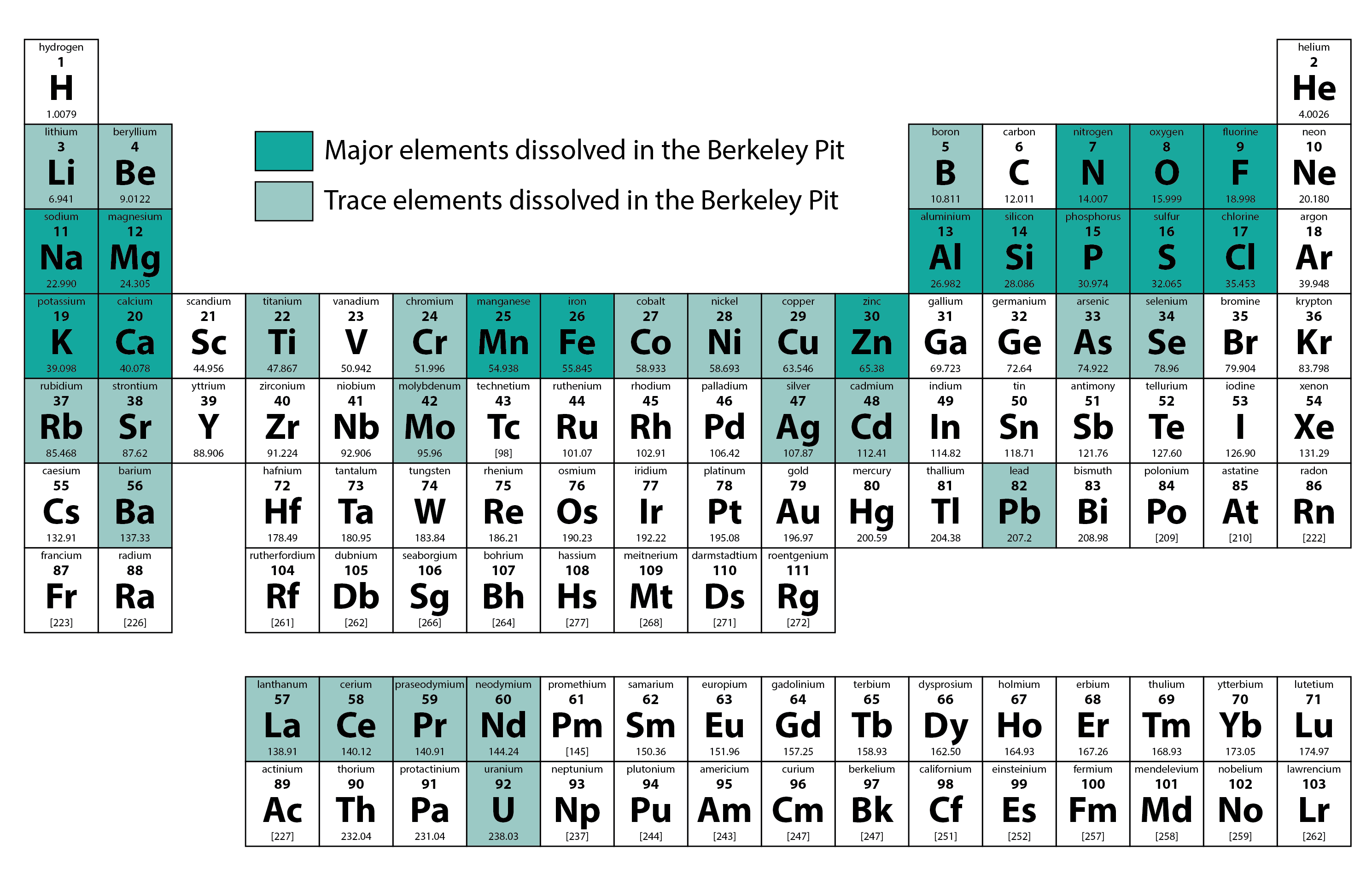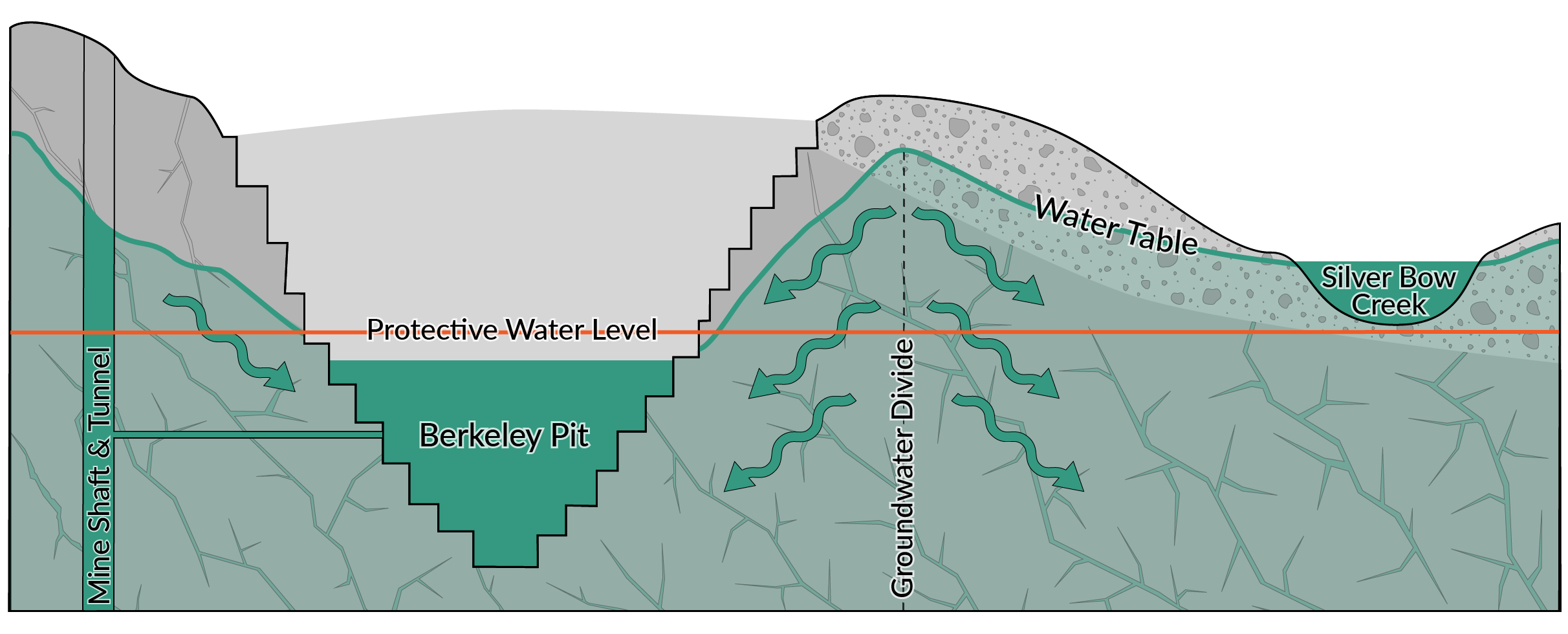About the Berkeley Pit
How was the Berkeley Pit formed?
The Berkeley Pit is a man-made depression formed by 30 years of open pit mining. Open pit mining is a surface mining technique that extracts minerals from an open pit in the ground. This technique is used to extract ore close to the surface. Open pit mining differs from historic underground mining that occurred in the late 19th and first half of the 20th century in Butte.
What’s in the Berkeley Pit water?
The water in the Berkeley Pit contains groundwater contaminated by sulfuric acid. The sulfuric acid breaks down other metals and minerals in the Butte Hill. As a result, more than 21 metals and minerals can be found in the Berkeley Pit’s water. Learn more on our Water Composition page.
Drinking Water
Is it safe to drink Butte’s water?
Yes, Butte has some of the best drinking water in the State of Montana. Drinking water is sourced from the Big Hole River and two reservoirs. The award winning Basin Creek Water Treatment Plant uses a cutting-edge ceramic membrane filtration system, the first of its kind in the United States, to treat water from the Basin Creek Reservoir for distribution to the public.
Superfund
What is a Superfund Site?
A superfund site is a contaminated site threatening human health or the environment and requiring clean-up. Cleanup is led by a responsible party under the oversight of the US EPA or, when no viable responsible party exists, by the EPA using federal funds. Learn more on our Superfund page.
Overflow
Could the Berkeley Pit overflow?
No. The Berkeley Pit is a deep hole that collects groundwater. The water within the Berkeley Pit cannot overflow because groundwater cannot flow “uphill.” Furthermore, the current remedy pumps, treats, and discharges Berkeley Pit water to keep water levels steady and well below the “protective water level.” Learn more on our Protective Water Level page.
Do Butte residents need flood insurance?
No, residents do not need flood insurance because of the Berkeley Pit. The Berkeley Pit is full of ground water and pumping and treating prevents the Berkeley Pit from filling to a level where flooding is a risk. That being said, a homeowner may need flood insurance if their home is located in the vicinity of a flood zone such as a creek or stream.
Protective Water Level
What is the Protective Water Level (PWL)
The Protective Water Level (PWL), previously known as the Critical Water Level (CWL), is 5,410 feet above sea level. We like to refer to this level as the “protective water level” because it is the lowest elevation in the Butte valley, the stream bottom of Silver Bow Creek. Keeping water below this elevation prevents contaminated water from infiltrating Silver Bow Creek and potentially impacting fish and other aquatic species. Learn more on our Protective Water Level page.
How is the Berkeley Pit monitored?
The Montana Bureau of Mines and Geology measure the water levels of the Berkeley Pit on a monthly basis. Measurements are collected at 23 monitoring wells, 14 mine shafts, and the pit itself. Twice a year water samples are analyzed to determine the water’s chemistry. This information helps scientists understand where the water is coming from, how it is moving underground, and how to manage the water moving forward. Learn more on our Water Monitoring page.
What is being done to manage the Berkeley Pit now?
The Berkeley Pit is actively managed by the BMFOU Settling Defendants with the regulatory oversight of the US EPA and Montana DEQ. Management includes routinely monitoring the current water level and pumping and treating contaminated water prior to discharging to area surface waters. This activity keeps the Berkeley Pit water level steady and below the protective water level. Learn more on our Water Treatment page.


